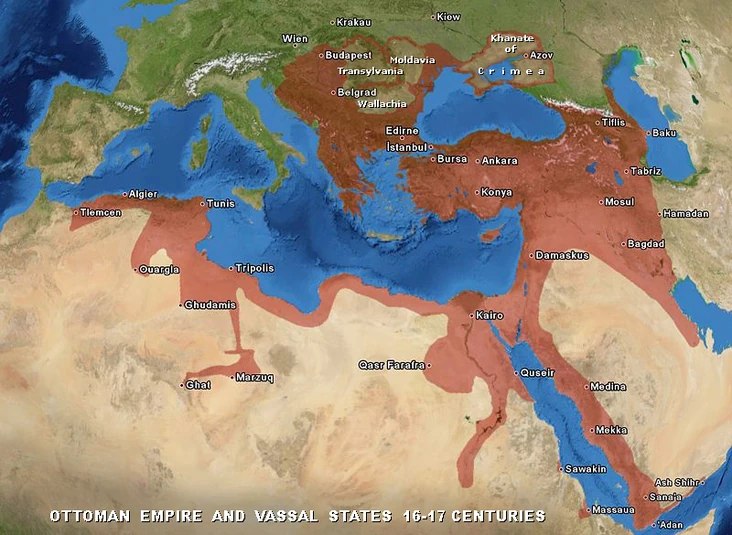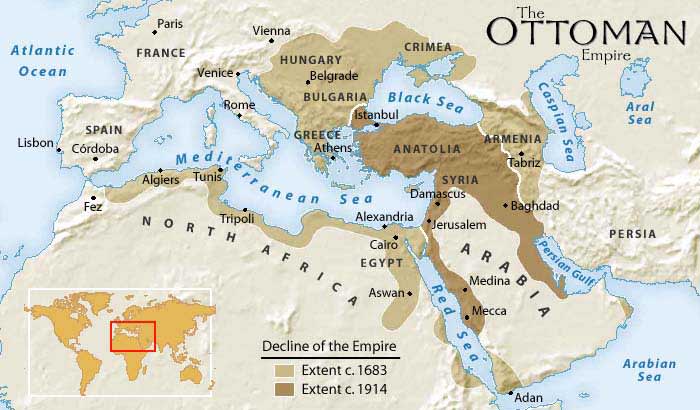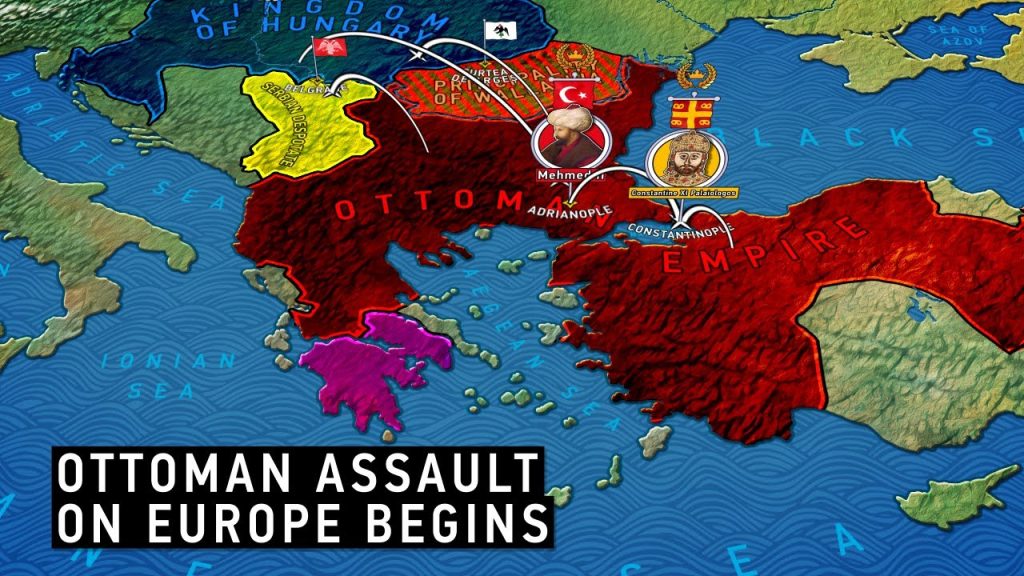Have you ever wondered where the mighty Ottoman Empire began? Understanding its origins can give you a clearer picture of how one of history’s most powerful empires shaped the world.
This story isn’t just about dates and places—it’s about the people, the culture, and the events that set everything in motion. Keep reading, and you’ll discover surprising facts that might change the way you see history forever. Your curiosity is about to be rewarded.
Early Anatolian Roots
The story of the Ottoman Empire begins in the heart of Anatolia, a land rich with history and cultural crossroads. Understanding its early roots requires looking closely at the region’s geography, the Turkic tribes that settled there, and the lingering influence of the Byzantine Empire. These elements together created the perfect environment for the rise of a powerful new state.
Geography Of Anatolia
Anatolia, also known as Asia Minor, is a peninsula in modern-day Turkey. It is surrounded by the Black Sea to the north, the Mediterranean Sea to the south, and the Aegean Sea to the west.
This strategic location made Anatolia a bridge between Europe and Asia, attracting traders, armies, and settlers over centuries.
Its varied terrain, from mountains to fertile plains, supported diverse communities and helped shape the early Ottoman leaders’ adaptability.
Turkic Tribes In The Region
Before the Ottomans, several Turkic tribes migrated into Anatolia from Central Asia. These tribes were skilled horsemen and warriors, often organized in clans and led by chieftains.
Among them, the Seljuks were the most dominant, establishing a strong presence and introducing Islamic culture and governance.
The Ottomans emerged from one such Turkic group, the Kayı tribe, which settled in northwestern Anatolia. Their ability to unite neighboring tribes played a key role in their early expansion.
Byzantine Influence
At the time the Ottomans started gaining power, much of Anatolia was still under Byzantine control or influence.
The Byzantine Empire’s administrative systems, military techniques, and cultural traditions left a lasting impact on the emerging Ottoman leadership.
Understanding the Byzantine presence helps explain why the Ottomans were able to navigate complex political landscapes and eventually take over key cities like Bursa and Constantinople.

Credit: www.theproductiveteacher.com
Rise Of Osman I
The rise of Osman I marks the beginning of a powerful empire that reshaped history. Osman’s journey from a local leader to the founder of the Ottoman Empire shows how vision and determination can change the course of events. Understanding his rise helps you see how small beginnings can lead to great outcomes.
Osman’s Leadership
Osman I was not just a leader; he was a strategist and a unifier. He gained the loyalty of various tribes through fairness and bold decisions.
His ability to inspire trust helped him gather a strong following. What qualities do you think make a leader truly effective in challenging times?
Foundation Of The Beylik
Osman established a small principality known as a beylik in the region of Bithynia. This was the seed from which the Ottoman Empire grew.
By creating a stable and organized governance structure, Osman set the stage for expansion. Consider how building a strong foundation early on can impact future growth in your own projects.
Initial Conquests
Osman’s early military campaigns extended his territory and influence. He took advantage of the weakening Byzantine Empire and other rivals around him.
These conquests were strategic, focusing on controlling key trade routes and fortresses. How can you apply the idea of targeting critical opportunities to your goals?
Cultural And Political Landscape
The Ottoman Empire, a powerful entity that spanned centuries, emerged from a rich tapestry of cultural and political influences. Understanding the landscape in which this empire began gives insights into its development and enduring legacy. The cultural and political dynamics of the early Ottoman period were shaped by interactions with neighboring states, religious influences, and tribal alliances.
Interactions With Neighboring States
The Ottoman Empire’s early interactions with neighboring states were crucial in shaping its growth and expansion. Through trade, diplomacy, and military encounters, the Ottomans navigated complex relationships that often involved both conflict and cooperation. Consider how these interactions provided not only challenges but also opportunities for the nascent empire to assert its influence.
Trade routes became conduits for cultural exchange, facilitating the flow of ideas, goods, and technologies. The Ottomans learned from and adapted to the strengths of their neighbors, incorporating elements that would strengthen their own society. As you explore these historical interactions, think about how today’s global interactions continue to mirror this intricate dance of influence.
Religious Dynamics
Religion played a pivotal role in the shaping of the Ottoman Empire, influencing its laws, customs, and governance. The Ottomans, predominantly Sunni Muslims, established a religious framework that both unified and distinguished them from their Christian and Shia neighbors. This religious identity was not merely a matter of faith but a tool for political legitimacy and social cohesion.
Religious tolerance within the empire allowed for a diverse population to coexist, creating a unique cultural mosaic. This approach fostered loyalty and minimized internal strife, illustrating the practical benefits of religious inclusivity. Reflect on how religious dynamics continue to influence modern societies and their governance today.
Tribal Alliances
Tribal alliances were foundational in the Ottoman Empire’s rise, providing military strength and political stability. The Ottomans skillfully navigated tribal politics, forming strategic partnerships that bolstered their power base. These alliances were often cemented through marriage, shared interests, and mutual defense pacts.
This ability to unify various tribes under a common banner was a testament to the Ottomans’ diplomatic acumen. Such alliances ensured a steady supply of warriors and resources, crucial for the empire’s survival and expansion. Consider how modern organizations and governments still rely on strategic alliances to achieve their objectives.
The cultural and political landscape of the early Ottoman Empire offers a fascinating glimpse into the forces that shaped one of history’s most influential empires. As you delve deeper into these elements, question how similar dynamics influence the world around you today.

Credit: historica.fandom.com
Significant Early Battles
The early battles of the Ottoman Empire played a crucial role in shaping its future. These conflicts tested the leadership and strategy of the emerging power. Understanding these battles helps you see how the Ottomans moved from a small principality to a dominant force.
Battle Of Bapheus
The Battle of Bapheus, fought in 1302, was a defining moment for the Ottomans. It marked their first major victory against the Byzantine Empire. This win gave the Ottomans control over key territories in northwestern Anatolia.
The battle was not just about land but about proving the Ottomans could challenge a powerful empire. Their success attracted more warriors and allies. Have you ever wondered how a single battle can change the fate of an entire empire?
Expansion Into Byzantine Territories
Following Bapheus, the Ottomans focused on expanding into Byzantine lands. They used both military strength and strategic alliances to gain control. This expansion allowed them to secure important trade routes and resources.
Capturing cities like Nicaea and Nicomedia gave the Ottomans a strong foothold in Asia Minor. Each conquest strengthened their political and economic position. Think about how controlling these areas helped the Ottomans grow beyond just a military power.
Legacy Of The Empire’s Origins
The legacy of the Ottoman Empire’s origins still shapes much of how we understand Turkey and its cultural landscape today. This legacy is a mix of myth, documented history, and modern interpretations that influence national identity. Understanding these layers helps you see how the empire’s beginning continues to affect the present.
Myths And Legends
The early days of the Ottoman Empire are surrounded by fascinating myths. Stories about Osman I, the empire’s founder, often mix fact with legend, portraying him as a heroic figure chosen by destiny. These tales serve more than entertainment; they create a sense of pride and continuity for many people today.
Have you ever wondered how much these legends shape your view of history? They color our perception and add a deeper emotional connection to the past.
Historical Records
Historical documents provide a clearer view of the empire’s beginnings. Records from the 13th and 14th centuries show Osman I and his followers as skilled warriors and leaders who capitalized on the decline of the Seljuk Sultanate. These sources give you facts about political strategies, battles, and alliances that built the empire’s foundation.
By comparing these records with legends, you can better understand the empire’s practical and strategic growth. This helps you separate the romanticized past from historical reality.
Impact On Modern Turkey
The origins of the Ottoman Empire still influence modern Turkey in many ways. From architecture to language and governance, you can see the empire’s early values reflected in today’s society. The pride in the empire’s start encourages a strong national identity and cultural unity.
What lessons from the empire’s beginning might help Turkey as it faces new challenges today? Thinking about this can deepen your understanding of how history shapes the future.

Credit: owlcation.com
Frequently Asked Questions
Where Did The Ottoman Empire Originate?
The Ottoman Empire began in the late 13th century in northwestern Anatolia, near the town of Söğüt. It started as a small principality under Osman I, who laid the foundation for this powerful empire.
Who Founded The Ottoman Empire?
Osman I is credited with founding the Ottoman Empire around 1299. He united various Turkic tribes in Anatolia, establishing a strong base for expansion and empire-building.
Why Was Anatolia Important To The Ottoman Empire’s Start?
Anatolia’s strategic location bridged Europe and Asia. It offered fertile lands and control over key trade routes, helping the Ottomans grow from a small principality to a vast empire.
How Did The Ottoman Empire Expand From Its Origin?
The Ottomans expanded through military conquest, alliances, and strategic marriages. Their strong army and leadership allowed them to capture important territories across Europe, Asia, and Africa.
Conclusion
The Ottoman Empire began in a small town called Söğüt in Turkey. This place marked the start of a powerful empire. Over time, it grew and ruled many lands. The empire’s roots show how small beginnings can lead to great history.
Knowing where it started helps us understand its impact today. The story of the Ottoman Empire is a story of growth and change. It reminds us that every big journey has a first step.





